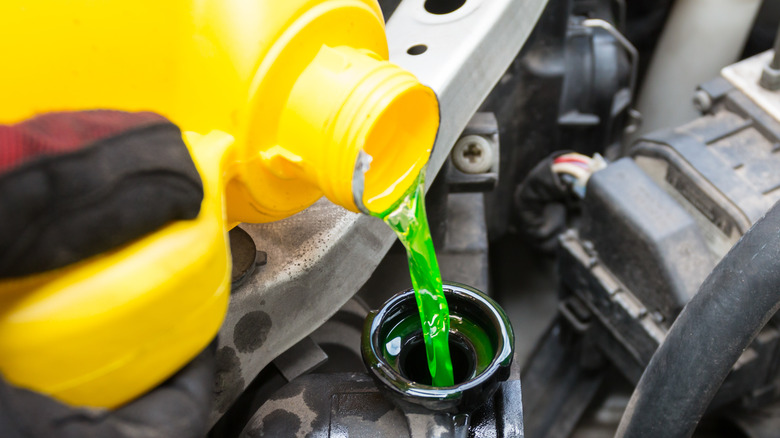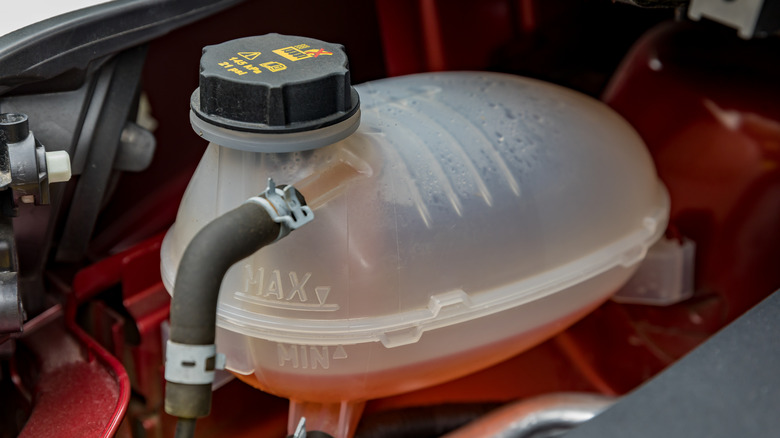How Often Do You Really Need To Change Your Car's Coolant?
The coolant in your car's radiator is not a forever liquid. Consumable fluids like engine oil, automatic transmission, and brake fluid need periodic replacement to keep your vehicle running reliably and problem-free. Moreover, the radiator coolant needs regular flushing and replenishment to prevent internal corrosion, overheating, and seizing in extreme cold weather. If oil is the lifeblood of an internal combustion engine, the coolant ensures the lifeblood keeps flowing.
The "coolant" term is a misnomer. More than helping to keep your engine cool, the coolant inside the radiator lubricates internal moving parts to keep corrosion in check. It contains anti-freeze and other additives to maintain a healthy cooling system and prevent the liquid from hardening in icy climates.
Finally, coolant has a higher boiling point than water, offering superior lubricating and cooling properties to protect the engine better in extreme driving scenarios, such as bumper-to-bumper traffic in the summer or off-roading. Inspecting the reservoir's coolant level weekly or before taking a long road trip is good practice. Excessive coolant loss leads to sudden overheating and can damage the engine and the cooling system, leading to costly repair bills.
When to change the engine coolant
It's not only a matter of when to change the coolant. Selecting the correct coolant for your car is critical. The problem is there are many types of coolants or anti-freeze, and the liquid comes in many colors, making it doubly hard for consumers to choose the right one. You can eliminate the guesswork by referring to the owner's manual.
Older vehicles could require a green IAT (Inorganic Additive Technology) coolant. In contrast, others need OAT (Organic Acid Technology) or HOAT (Hybrid Organic Acid Technology) that come in red, pink, purple, yellow, or other colors. Using the wrong coolant might lead to premature corrosion and mediocre anti-freeze properties.
Toyota and Honda recommend changing the coolant every two years or 30,000 miles, and it's worth checking the condition of the liquid at least every 15,000 miles. You won't harm the engine and the radiator if you flush and replace the coolant earlier than the recommended service interval. However, keeping contaminated anti-freeze circling inside the motor will undoubtedly lead to problems in the long run.


